Element
Silk – Fibroin and Sericin
Silk – Fibroin and Sericin
Fibroin and sericin have a chemical composition that is quite similar, but they differ substantially in terms of chemical behaviour and physical and structural characteristics:
C
H
N
O
Fibroin
47,60
6,39
18,33
27,68
Sericin
46,50
6,04
16,50
30,96
Figure 8 – Microscopic images of a silk fibre showing the two filaments of fibroin and their sericin coating
Amino acid composition of fibroin and sericin
| Ammino acid | H2N-CH-COOHIR | Fibroin (%) | Sericin (%) |
|---|---|---|---|
| Glycine (Gly) | -H | 42,9 | 13,5 |
| Alanine (Ala) | -H | 42,9 | 13,5 |
| Serine (Ser) | -CH2-OH | 12,2 | 33,4 |
| Tyrosine (Tyr) | -CH2-Ph-OH | 4,8 | 2,6 |
| Valine (Val) | -CH-(CH3)2 | 2,5 | 2,8 |
| Aspartic acid (Asp) | -CH2-COOH | 1,9 | 16,7 |
| Glutamic acid (Glu) | -CH2-CH2-COOH | 1,4 | 4,4 |
| Threonine (Thr) | CH-OH-CH3 | 0,9 | 0,53 |
| Phenylalanine (Phe) | CH2-Ph | 0,67 | 0,53 |
| Isoleucine (Ile) | -CH-(CH3)(CH2CH3) | 0,64 | 0,72 |
| Leucine (Leu) | -CH2-CH-(CH3)2 | 0,55 | 1,1 |
| Arginine (Arg) | -(CH2)3–NH-C-(NH2)2+ | 0,51 | 3,1 |
| Proline (Pro) | * | 0,45 | 0,68 |
| Lysine (Lys) | -(CH2)4–NH2 | 0,38 | 3,3 |
| Histidine | * | 0,19 | 1,3 |
| Tryptophan | -- | -- | |
| Taurine | -- | -- | |
| Methionine | CH2-CH2-S-CH3 | 0,1 | 0,04 |
| Cysteine | CH2-S-S-CH2 | 0,03 | -- |
GLYCINE (non-essential amino acid) – helps trigger the release of oxygen required for the cell-making process; important in the production of hormones responsible for a strong immune system.
ALANINE (non-essential amino acid) – is an important source of energy for muscle tissue, the brain and central nervous system; strengthens the immune system by producing antibodies; helps in the metabolism of sugars and organic acids.
SERINE (non-essential amino acid) – stores glucose in the liver and muscles; strengthens the immune system by producing antibodies; synthesizes the fatty acid sheath that covers nerve fibres.
ASPARTIC ACID (non-essential amino acid) – helps remove harmful ammonia compounds from the body. When ammonia enters the circulatory system, it acts as a highly toxic substance that is harmful to the central nervous system. Recent studies have demonstrated that aspartic acid can increase resistance to fatigue and enhance stamina.
GLUTAMIC ACID (non-essential amino acid) – considered to be a natural “brain food” that improves mental capacities; helps speed the healing of ulcers; reduces fatigue; helps control alcoholism, schizophrenia and sugar cravings.
VALINE (essential amino acid) – promotes mental vigour, muscle coordination and relaxation.
PROLINE (non-essential amino acid) – is extremely important for the proper functioning of joints and tendons; helps maintain and strengthen heart muscles.
THREONINE (essential amino acid) – is an important constituent of collagen, elastin, and enamel protein; prevents fat accumulation in the liver; aids digestion and improves intestinal tract function; assists in metabolism and assimilation.
LYSINE (essential amino acid) – ensures the adequate absorption of calcium; helps form collagen (which makes up bone cartilage and connective tissues); aids in the production of antibodies, hormones and enzymes. Recent studies have shown that lysine may be effective against herpes by improving the balance of nutrients that reduce viral growth. A deficiency can cause tiredness, impaired concentration, irritability, bloodshot eyes, retarded growth, hair loss, anaemia and reproductive problems.
ARGININA (non-essential amino acid) – studies have shown that it improves immune responses to bacteria, viruses and tumour cells; promotes wound healing and regeneration of the liver; causes the release of growth hormones; considered crucial for optimal muscle growth and tissue repair.
TYROSINE (non-essential amino acid) – transmits nerve impulses to the brain; aids in recovery from depression; improves memory; increases mental alertness; promotes healthy functioning of the thyroid, adrenal and pituitary glands.
PHENYLALANINE (essential amino acid) – used by the brain to produce noradrenaline, a chemical that transmits signals between nerve cells and the brain; keeps people awake and alert; reduces hunger pains; functions as an antidepressant and helps improve memory.
LEUCINE AND ISO-LEUCINE (essential amino acid) – provide ingredients to produce other essential biochemical components in the body, some of which are used for energy production; stimulants for the upper brain that enhance alertness.
METHIONINE (essential amino acid) – principle supplier of sulphur which prevents disorders of the hair, skin and nails; helps lower cholesterol levels by increasing the liver’s production of lecithin; reduces liver fat and protects the kidneys; a natural chelating agent for heavy metals; regulates ammonia production and creates ammoniafree urine, which reduces bladder irritation; influences the formation of hair follicles and promotes hair growth.
CYSTINE (non-essential amino acid) – functions as an antioxidant and is a potent aid in protecting the body against radiation and pollution. It can slow the aging process, deactivate free radicals, neutralize toxins, aid in protein synthesis, and ensure cell renewal. Essential in the formation of skin, it helps in recovery from burns and surgery. Comprises 10-14% of hair and skin.
TRYPTOPHAN (essential amino acid) – a natural relaxant, it helps relieve insomnia by inducing normal sleep; reduces anxiety and depression; helps in the treatment of migraines; helps the immune system; helps reduce the risk of arterial and cardiac spasms; together with LYSINE reduces cholesterol levels.
TAURINE (essential amino acid) – helps stabilize membrane excitability, an important factor in the control of epileptic seizures. TAURINE and SULPHUR are considered necessary factors for the control of countless biochemical modifications that occur in the aging process; helps eliminate waste from free radicals.
HISTIDINE (non-essential amino acid) – is found abundantly in haemoglobin; used in the treatment of rheumatoid arthritis, allergenic diseases, ulcers and anaemia. A deficiency can cause hearing problems.
Fibroin
Three crystalline phases can be identified in fibroin:
- phase I: comprises 60% of the molecule and is characterized by a highly crystalline structure made up primarily of glycine, alanine, serine and tyrosine;
- phase II: comprises approximately 30% of the molecule and is made up primarily of glycine, alanine, tyrosine and valine;
- phase III: comprises the amorphous part of the molecule and is characterized primarily by amino acids with bulky or ionic side groups. These zones are responsible for giving silk its elasticity. Amino acids with bulky side groups facilitate the movement of fibres.
Higher structures
The long polypeptide chains are oriented parallel to the axis of the fibre and the main amino acids present along the chain are glycine and alanine. The bonds holding these chains together are weak hydrogen bonds or ionic bonds. Fibroin has an almost linear structure that does not form α-helices but rather is arranged in a zig-zag shape with substituents to the side like in a folded sheet. The chains arranged in a planar fashion along the axis of the fibre form hydrogen and electrostatic bonds with adjacent chains. This structure results in significant interaction between molecules, with elevated crystallinity that causes higher rigidity and reduced rigidity compared to hair fibres like wool

Figure 9 – Primary fibroin structure
Figure 10 – Spatial structure of fibroin
Figure 11 – Structure of fibroin and the antiparallel β-sheet of fibroin (from “The Principles of Biochemistry” by Lehninger, D.L. Nelson and M.M. Cox, Zanichelli 2006)
SERICIN
Sericin is the second protein of silk. In addition to functioning as a coating, glue and protection for fibroin, it lubricates and promotes the biological process of thread winding in cocoon building. Sericin is a complex protein molecule. Five different fractions of sericin have been isolated, with glycoproteins having a range of molecular weights (65-400 kilodalton) and other smaller fractions. Native sericin, just after it is produced by the silk glands, is very different from the sericin made in subsequent stages or after boiling and degumming the silk. In its secondary structure, sericin is partially distributed. A large part of this protein is very stable, thanks to the presence of beta-sheets formed by hydrogen bonds between polar amino acids. 35% of its structure is characterized by beta-sheets. For the remainder, 63% of the structure consists of random spirals, while a small percentage of the structure is alpha-helices.

Figure 12 – Sericin structure suggested by Mayer and S. Maric
The amino acid composition of sericin is identical to natural moisturizing factor (NMF), which is a natural, integral part of the human skin structure. The natural moisturizing factor is a mixture of various water-soluble and hygroscopic substances that absorb and retain significant amounts of water. This factor is important for maintaining the moisture of the outermost layer of skin (stratum corneum). It is found within the corneocytes, where it ensures hydration of the stratum corneum, maintaining a level of 15% moisture that is very important for skin health. It is also present on the surface of the epidermis, where it is part of the composition of the hydrolipid film that forms an almost continuous layer over the skin. Identified by Jacobi and colleagues in 1959, it is believed to be the principal factor in the moisturizing mechanism of the outermost layers of the skin. In addition to skin moisturization, the substances that make up the natural moisturizing factor contribute to the acidification of the outermost layers of the skin.

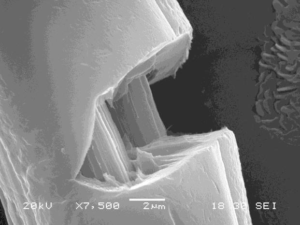
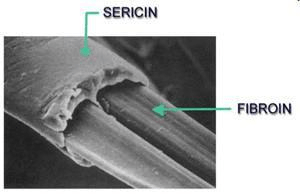
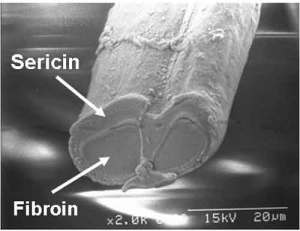
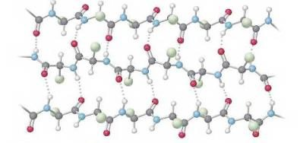
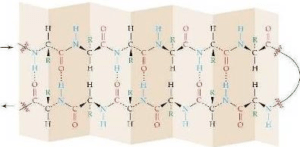
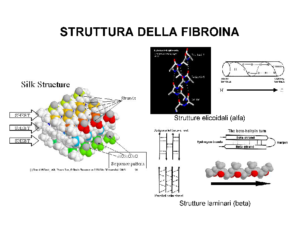
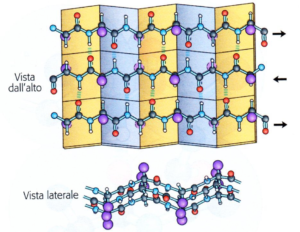
No Comments
Sorry, the comment form is closed at this time.